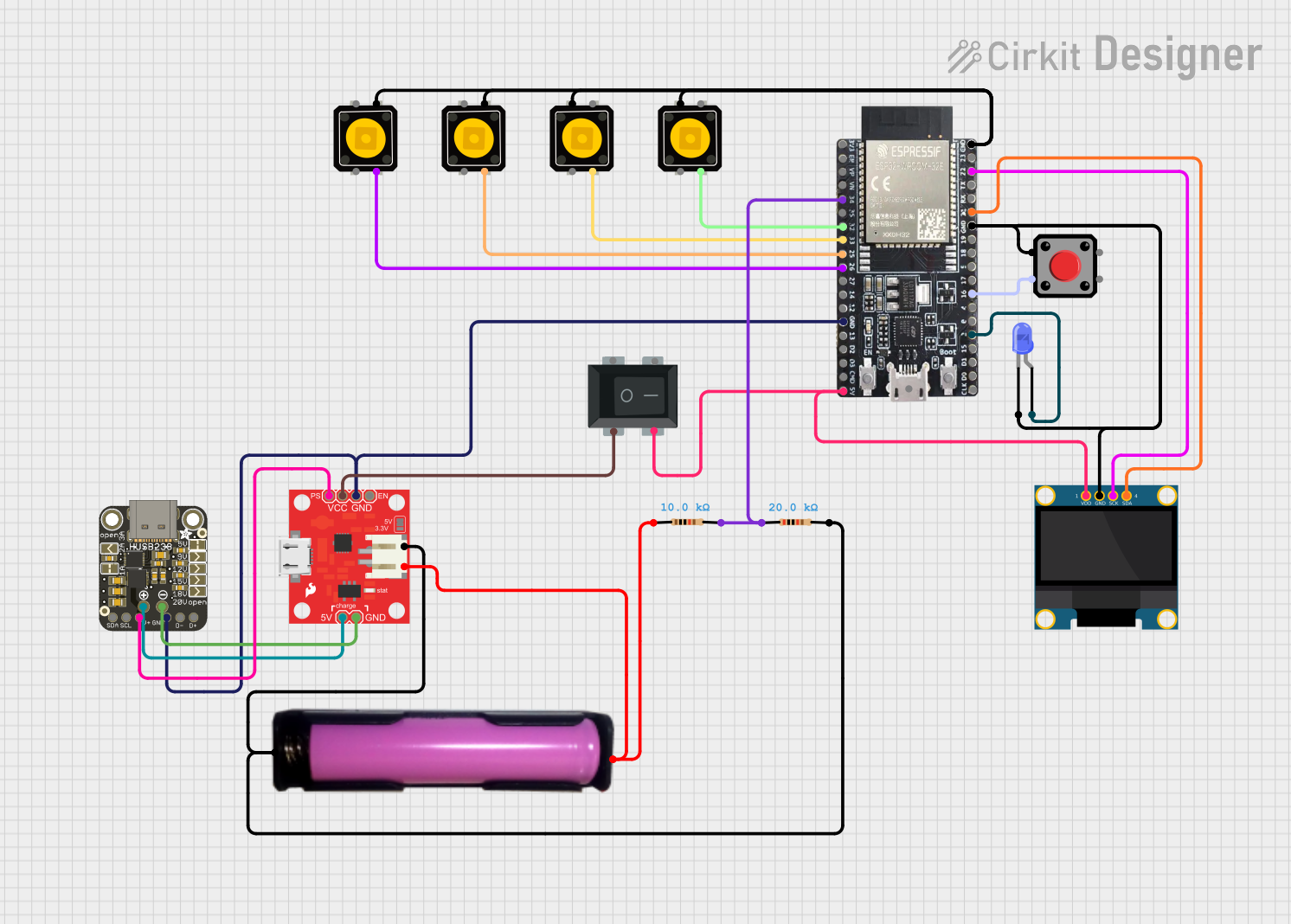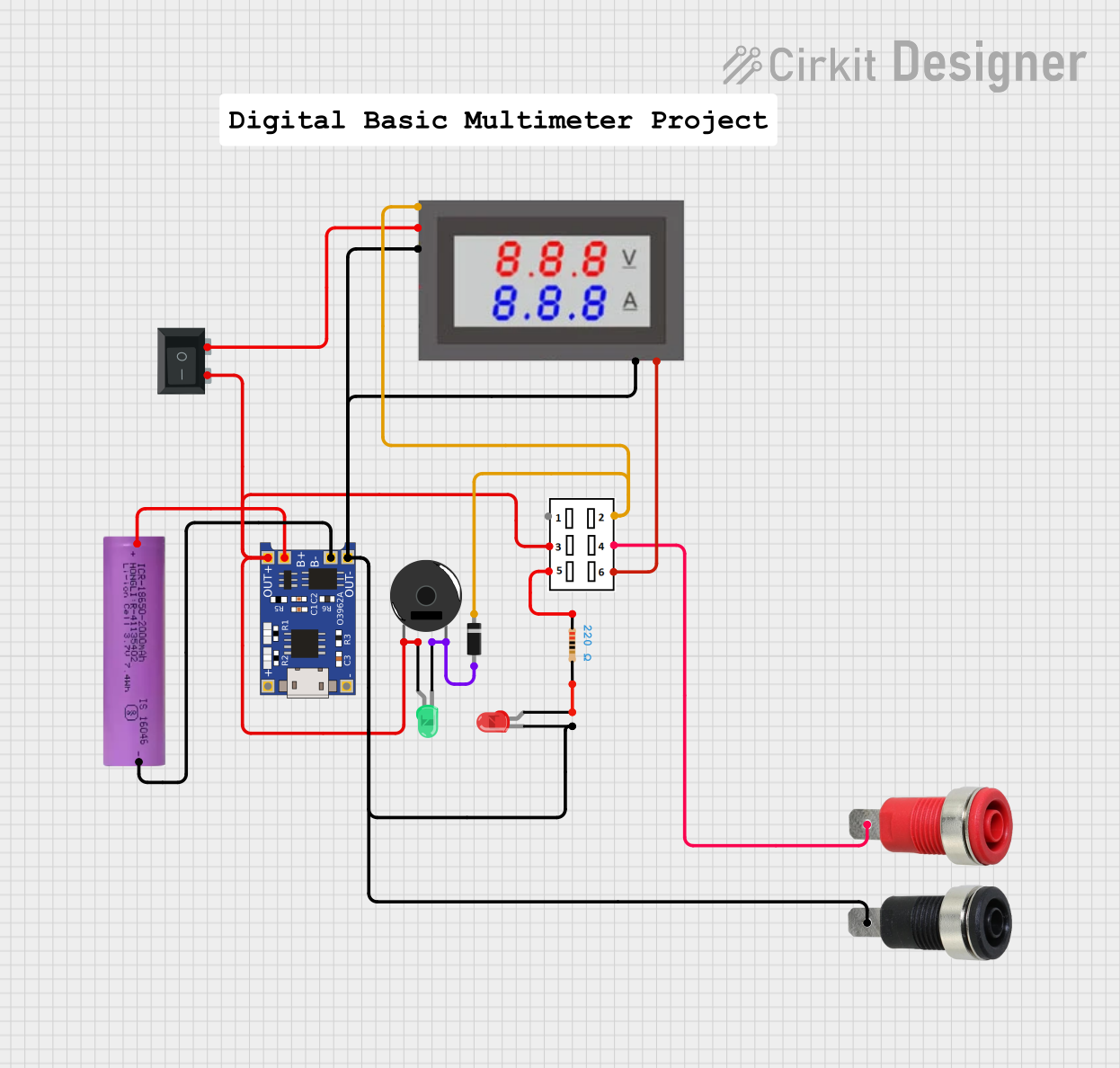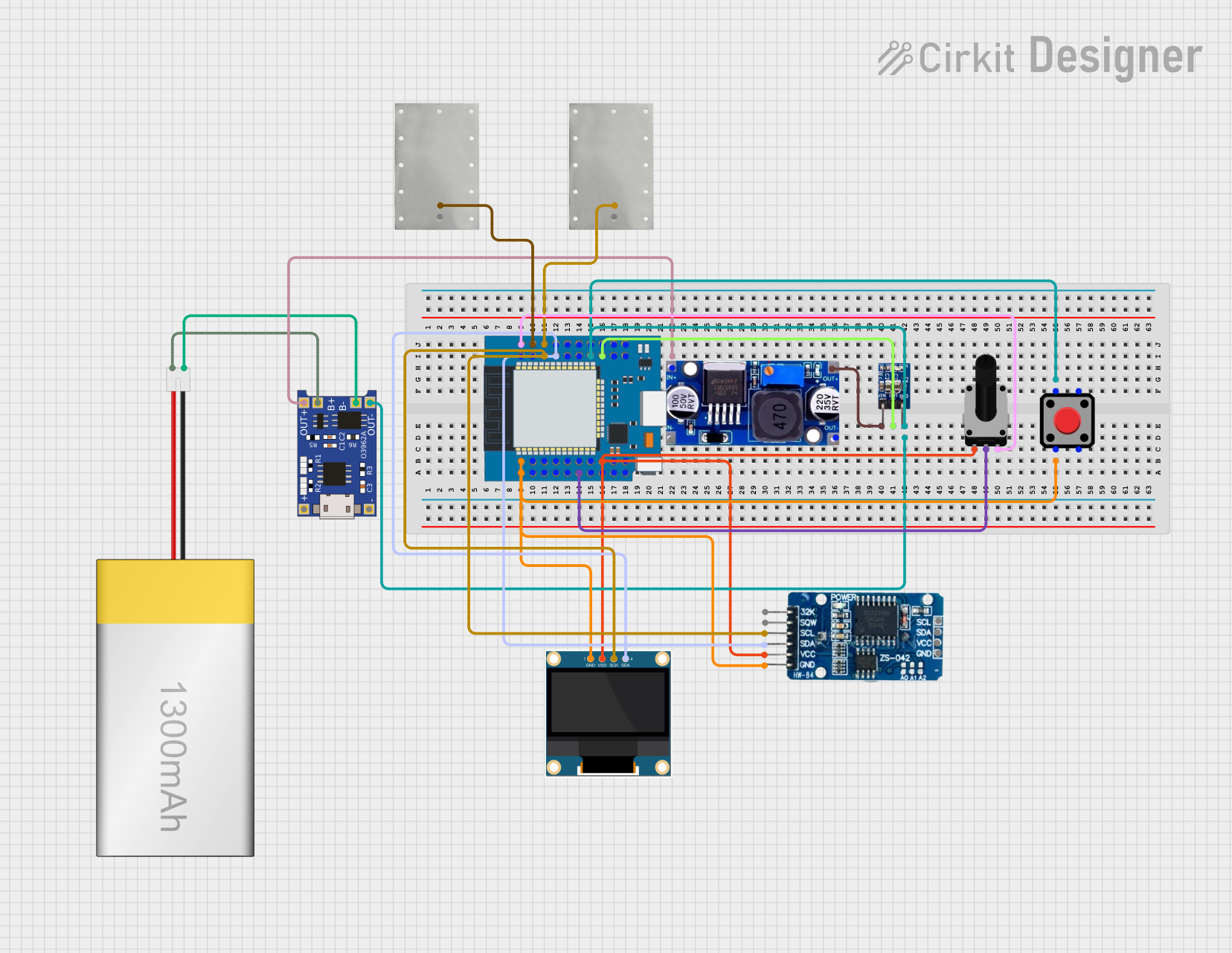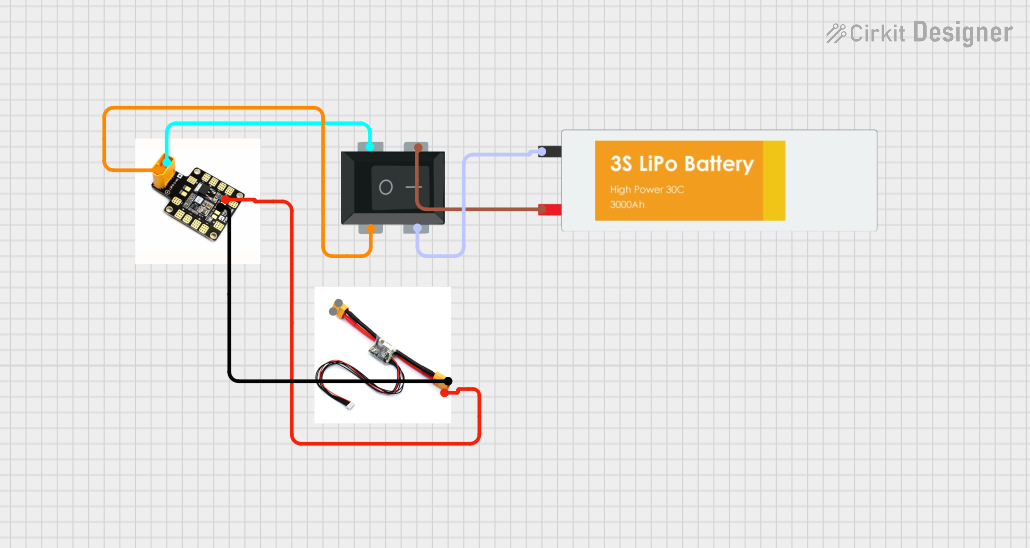
How to Use lilypad battery holder: Examples, Pinouts, and Specs

 Design with lilypad battery holder in Cirkit Designer
Design with lilypad battery holder in Cirkit DesignerIntroduction
The LilyPad Battery Holder is a specialized component designed to securely hold and connect a battery to a LilyPad Arduino board. This component ensures a stable power supply to your wearable electronics projects, making it an essential part of any LilyPad-based circuit. Its compact and lightweight design makes it ideal for e-textiles and wearable technology applications.
Explore Projects Built with lilypad battery holder

 Open Project in Cirkit Designer
Open Project in Cirkit Designer
 Open Project in Cirkit Designer
Open Project in Cirkit Designer
 Open Project in Cirkit Designer
Open Project in Cirkit Designer
 Open Project in Cirkit Designer
Open Project in Cirkit DesignerExplore Projects Built with lilypad battery holder

 Open Project in Cirkit Designer
Open Project in Cirkit Designer
 Open Project in Cirkit Designer
Open Project in Cirkit Designer
 Open Project in Cirkit Designer
Open Project in Cirkit Designer
 Open Project in Cirkit Designer
Open Project in Cirkit DesignerCommon Applications and Use Cases
- Wearable Electronics: Powering e-textile projects such as smart clothing and accessories.
- Prototyping: Providing a reliable power source for testing and developing LilyPad Arduino circuits.
- Educational Projects: Used in STEM education to teach students about electronics and wearable technology.
Technical Specifications
Key Technical Details
| Specification | Value |
|---|---|
| Manufacturer | LilyPad |
| Part ID | - |
| Battery Type | Coin cell (CR2032) |
| Voltage | 3V |
| Current Rating | 220mAh |
| Dimensions | 20mm x 20mm x 5mm |
| Weight | 2g |
| Connector Type | Sewable pads |
Pin Configuration and Descriptions
| Pin Number | Pin Name | Description |
|---|---|---|
| 1 | VCC | Positive terminal of the battery |
| 2 | GND | Ground terminal of the battery |
Usage Instructions
How to Use the Component in a Circuit
Insert the Battery:
- Place a CR2032 coin cell battery into the holder, ensuring the positive side faces up.
Connect to LilyPad Arduino:
- Sew the VCC pad of the battery holder to the VCC pad on the LilyPad Arduino using conductive thread.
- Sew the GND pad of the battery holder to the GND pad on the LilyPad Arduino.
Powering the Circuit:
- Once connected, the battery will provide power to the LilyPad Arduino and any connected components.
Important Considerations and Best Practices
- Secure Connections: Ensure that the conductive thread connections are tight and secure to prevent intermittent power issues.
- Battery Orientation: Always insert the battery with the correct orientation to avoid damaging the holder or the LilyPad Arduino.
- Battery Life: Monitor the battery life and replace the coin cell when the voltage drops below the required level for your project.
Troubleshooting and FAQs
Common Issues Users Might Face
No Power to the Circuit:
- Solution: Check the battery orientation and ensure it is inserted correctly. Verify that the conductive thread connections are secure and not broken.
Intermittent Power Loss:
- Solution: Ensure that the conductive thread is tightly sewn and making good contact with the pads. Check for any loose connections or frayed thread.
Short Battery Life:
- Solution: Verify that the circuit is not drawing more current than the battery can supply. Consider using a fresh battery if the current one is depleted.
FAQs
Q1: Can I use a different type of battery with the LilyPad Battery Holder?
- A1: The LilyPad Battery Holder is designed specifically for CR2032 coin cell batteries. Using a different type of battery is not recommended as it may not fit properly or provide the correct voltage.
Q2: How do I know when the battery needs to be replaced?
- A2: If your circuit starts to behave erratically or stops working, it may be a sign that the battery voltage is too low. Use a multimeter to check the battery voltage and replace it if it is below 3V.
Q3: Can I wash my e-textile project with the battery holder attached?
- A3: It is not recommended to wash the battery holder or any electronic components. Remove the battery and any electronic parts before washing your e-textile project.
Example Code for Arduino UNO
While the LilyPad Battery Holder is primarily used with LilyPad Arduino boards, you can also use it to power an Arduino UNO for small projects. Below is an example code to blink an LED connected to an Arduino UNO powered by a CR2032 battery through the LilyPad Battery Holder.
// Example code to blink an LED on Arduino UNO powered by LilyPad Battery Holder
const int ledPin = 13; // Pin number for the LED
void setup() {
pinMode(ledPin, OUTPUT); // Set the LED pin as an output
}
void loop() {
digitalWrite(ledPin, HIGH); // Turn the LED on
delay(1000); // Wait for 1 second
digitalWrite(ledPin, LOW); // Turn the LED off
delay(1000); // Wait for 1 second
}
This documentation provides a comprehensive guide to using the LilyPad Battery Holder, ensuring that both beginners and experienced users can effectively integrate it into their projects.